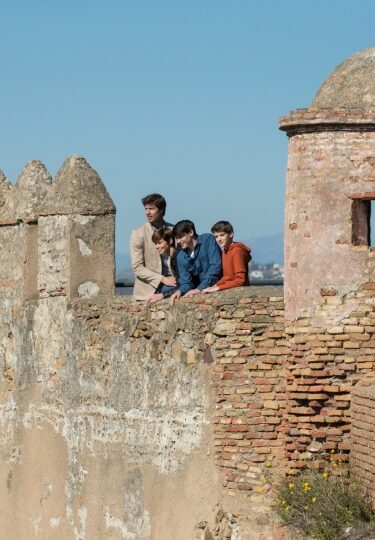The immediate answers to the question “What is Malaga known for?” would be its pastel-hued Old Town, painter Pablo Picasso, Moorish fortifications, and Mediterranean beaches.
Yet, dig a little deeper into the culture of Andalusia’s second city, and you’ll soon discover that Malaga is equally lauded nationally for its sardine skewers, shopping on Calle Marqués de Larios, and cutting-edge art galleries. But Malaga isn’t only a gorgeous city—it’s also a glorious province, meaning that its appeal extends beyond its urban charms.
Moorish Fortifications

Gibralfaro Castle
For some 800 years, southern Spain was ruled by the Moors, Berbers and Arabs who hailed from North Africa. Their legacy is writ large across Andalucia—including the region’s name, which stems from al-Andalus—and is remarkably preserved in Malaga’s most imposing downtown architecture.
Two of the buildings that Malaga is most known for were constructed under Moorish rule: the Alcazaba and Gibralfaro Castle. These formidable fortifications were erected between the
11th and 14th centuries by the Nasrid Kingdom, also known as the Kingdom of Granada.
This pair of Islamic edifices—connected by a coracha, a walled corridor—remain two of Spain’s best-preserved Moorish-era defenses, and both are visitable today.

Alcazaba
The Alcazaba, a palatial fortress that climbs above Mount Gibralfaro’s Roman ruins, consists of two imposing sections: the outer, rammed earth wall and the internal palace.
Within is a glimpse into the Nasrid Kingdom’s heyday, with typically Islamic horseshoe arches, courtyards, ceramic-tiled fountains and pools, and marble columns. Consider a guided tour to learn more about the Moors’ ingenious ventilation and water systems. If you don’t have time to visit the Alhambra Palace in nearby Granada, consider this a mini-Alhambra.

Gibralfaro Castle
Adjacent is the Gibralfaro Castle, added later to house troops and improve the palace’s defenses. While less elegantly embellished, a walk atop the sturdy walls is one of the best things to do in Malaga, offering some of the city’s most panoramic vistas.
Pablo Picasso

Pablo Picasso statue
Malaga’s most famous son is none other than Pablo Picasso, the renowned painter, sculpturist, and co-inventor of Cubism.
Born in the city’s Centro Histórico in 1881, Picasso left Malaga with his family at age 10—two years after painting his first oil work—for northern Spain. However, his departure hasn’t diminished his esteem in the city.
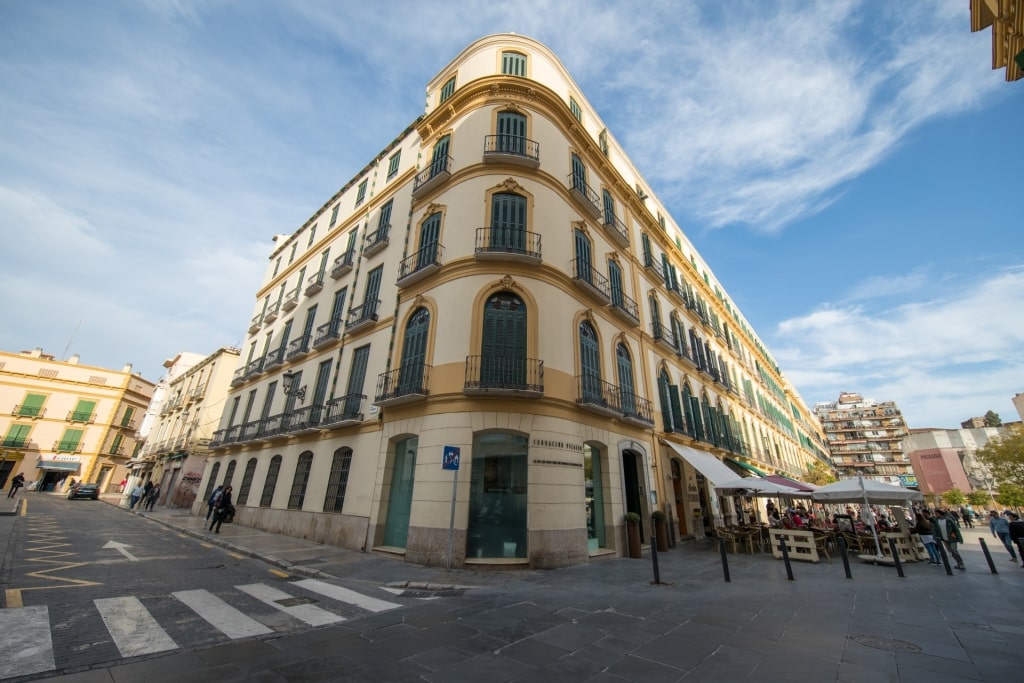
Museo Casa Natal de Picasso
As such, Picasso is the definitive artistic answer to “What is Malaga famous for?”. His childhood home on Plaza de la Merced—one of Malaga’s largest plazas or squares—is now the Museo Casa Natal de Picasso. This small museum showcases the artist’s early life alongside a collection of lesser-known sketches.
Nearby is the Museo Picasso Málaga, a more impressive collection housed in the 16th-century Buenavista Palace. Here hang some of his more famous pieces, including Cubist-style Fruit Bowl and Figure, and Portrait of a Bearded Man, one of his earliest canvases, painted while attending art school.
Sweet Wine

Wine tasting in Malaga
Spain isn’t short of wine regions. But the Málaga DOP—the Denominación de Origen Protegida or Protected Designation of Origin that covers the entire province—isn’t your typical Spanish vino.
Malaga’s wine scene is renowned for its sweet, fortified wines, which are predominantly made from Pedro Ximénez and Muscat grapes.
These dessert wines have been celebrated since the 18th century, when they became a favorite tipple with the European aristocracy. But the region’s history of winemaking reaches back millennia, with the Phoenicians and Romans both producing here.
The best way to discover the wines that Malaga is famous for is by joining a tour and tasting in one of the provincial wineries—Manilva and La Axarquia are two of the most respected zones.
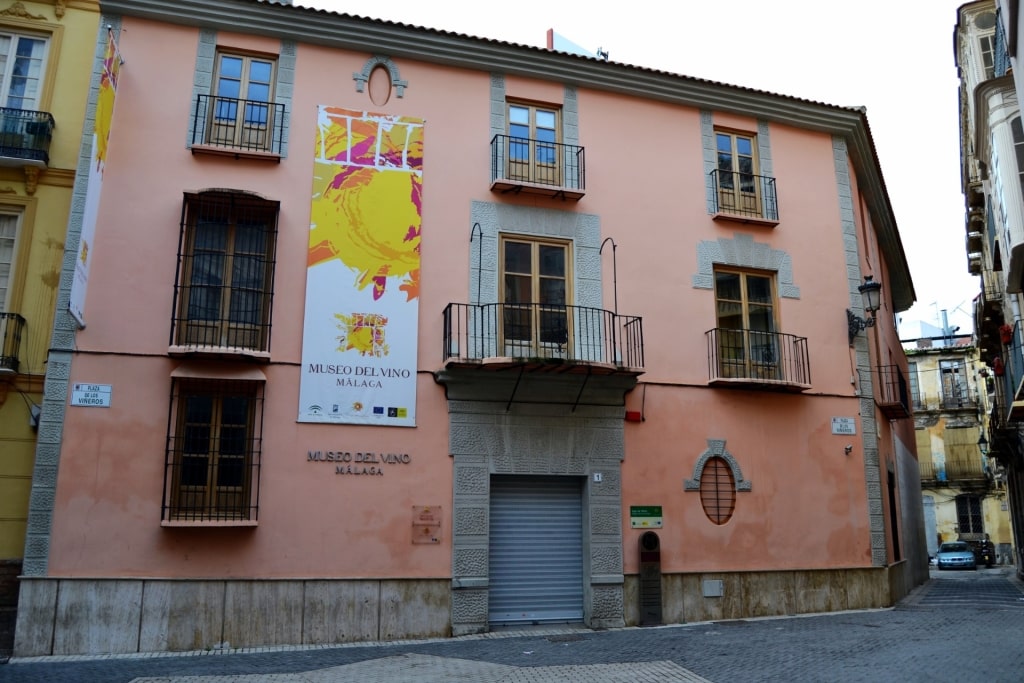
Museo del Vino Malaga Photo by Emilio J. Rodríguez-Posada on Wikimedia Commons, licensed under CC BY-SA 2.0
If you’re not leaving the city, head to the Museo del Vino Malaga to study the history and production methods. Housed in another of Malaga’s multiple reimagined palaces, the exhibits afford an informative overview followed by a tasting of regional sweet and classic dry wines.
An Unfinished Cathedral
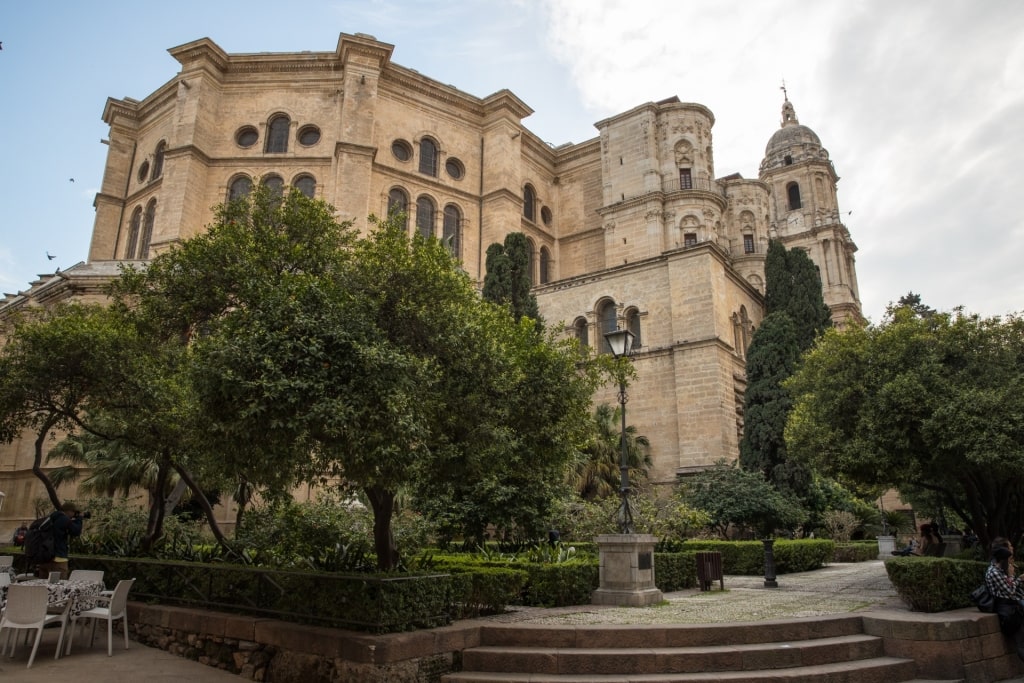
Malaga Cathedral
Malaga Cathedral, located in the Old Town, might officially be called Santa Iglesia Catedral Basílica de la Encarnación de Málaga, but the locals have another nickname for it: La Manquita.
Translated to mean “The One-Armed Lady,” the affectionate moniker is a humorous reference to the fact that the Cathedral’s second southern tower was never completed.
While the northern counterpart stands at an impressive 276 feet—climbable in part to tour the roof—the stumpy south tower barely rises above the facade.
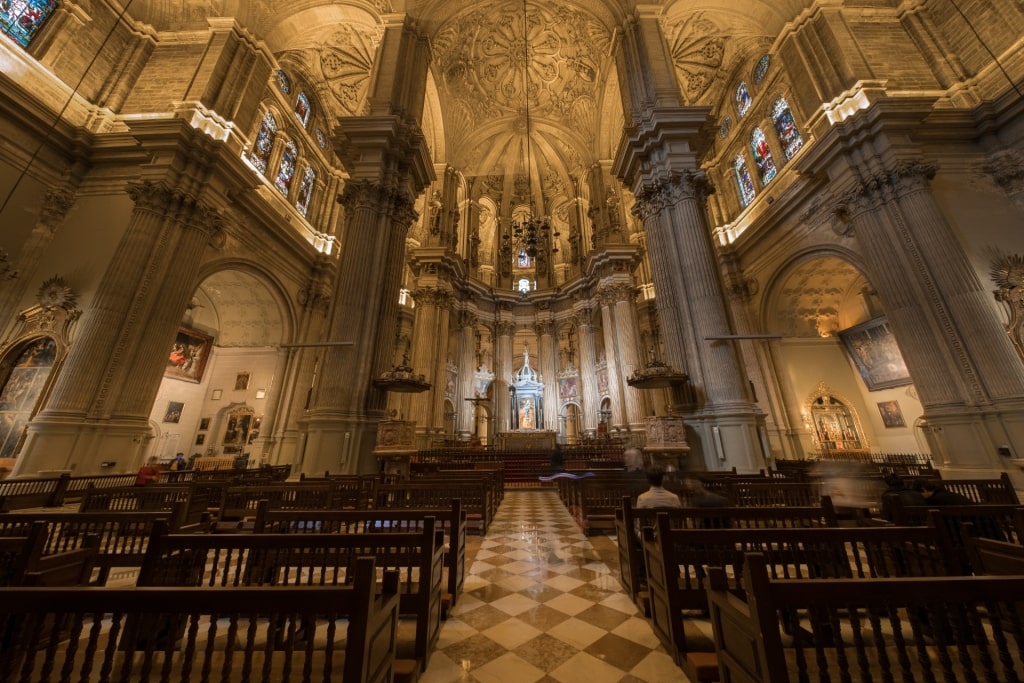
Malaga Cathedral
Financial difficulties led to the construction pausing in 1782, but over time, the asymmetrical imperfection became a beloved character of the city. However, work resumed in 2024 to finally complete the tower and roof, so time is ticking to witness this magnificent Renaissance edifice while it’s still “La Manquita.”
Roman Ruins
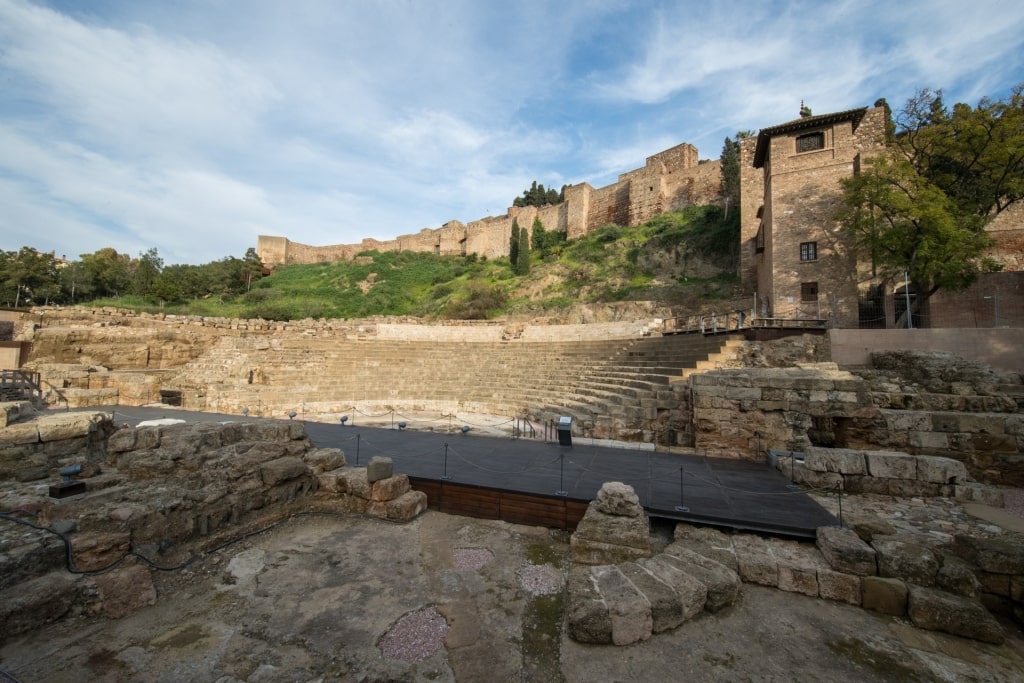
Roman theater
In the third century BC, the Romans took control of Malaga and the surrounding region, anointing it Flavia Malacita and assembling a booming trading port.
Traces of the Empire are still part of what Malaga is known for today. Right in the heart of the Centro Históric—just below the Alcazaba—are the well-preserved ruins of a Roman theater.
The once 2,000-seater theater was only rediscovered in 1951, following excavations, and is now fully open to all as the Centro Histórico’s centerpiece. An easily missed underground visitor center adds context to the archeological site.
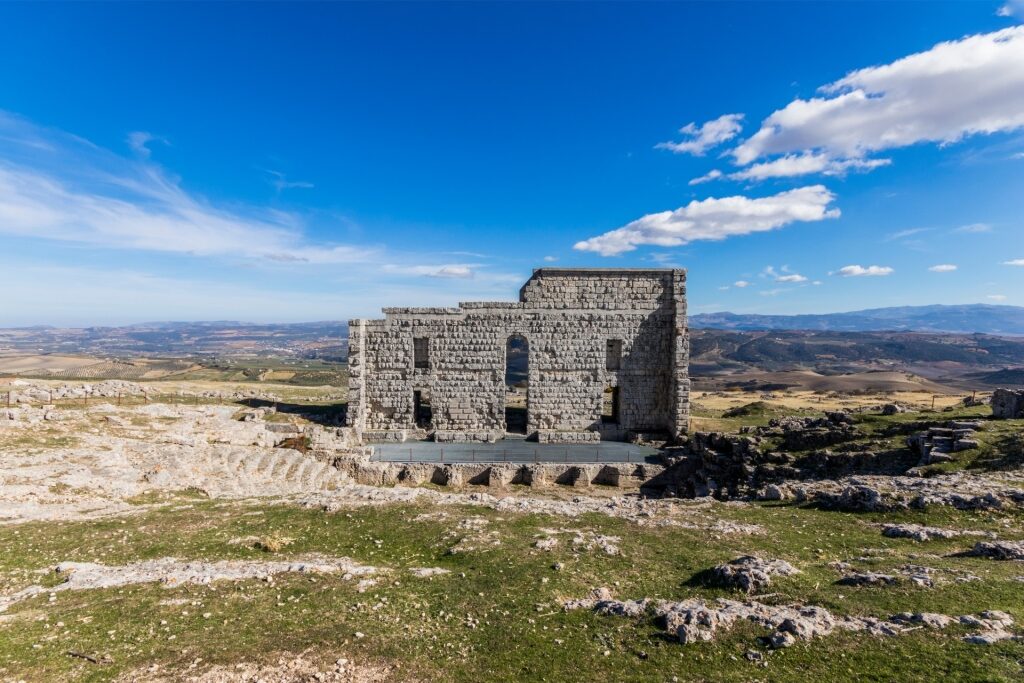
Acinipo
Other vestiges of the Roman occupation can be sighted across Malaga province, including the Roman Villa in Marbella and the ruined city of Acinipo near Ronha.
Sunshine
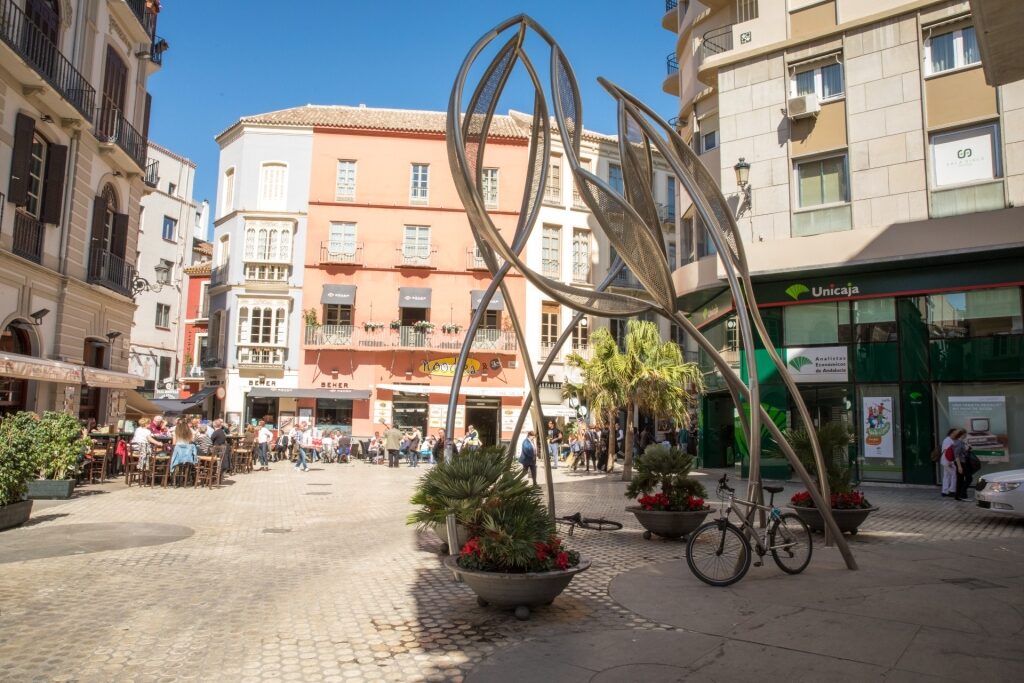
Centro Histórico
With golden rays blazing down on Andalusia practically year-round, any vacationer’s most appreciated answer to “What is Malaga famous for?” is sunshine.
With a subtropical Mediterranean climate, incredibly mild winters, and scorching summers, Malaga’s 300 annual days of sunshine—making it one of Spain’s sunniest cities—are a welcome delight.
The Costa del Sol’s Beaches
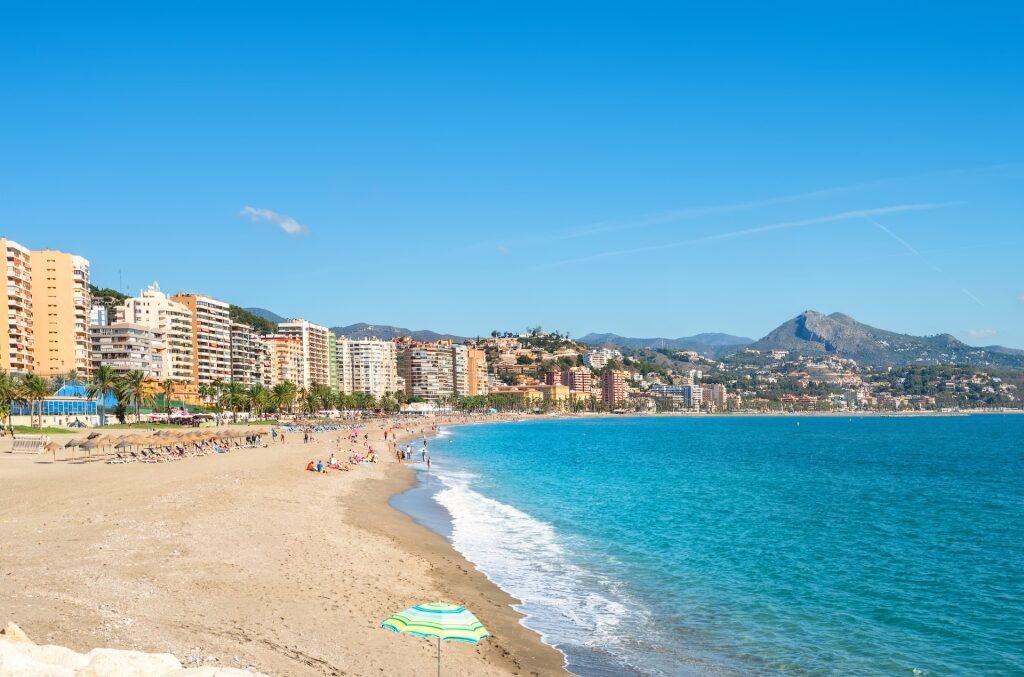
La Malagueta
With all that sunshine, a place to cool off is essential. Thankfully, Malaga province is also famous for sand and sea, thanks to the sun-drenched Costa del Sol, the coastline that extends west from the city as far as the border with Gibraltar and east to the town of Nerja.
You don’t even need to stray far to find a shoreline. Right on the city’s doorstep is the urban beach of La Malagueta, an inviting sweep of golden sand that arches away from the port, complete with bathrooms, beach clubs, and good vibes.
Head further along the Costa del Sol, and you’ll be treated to some of Spain’s best shorelines and beach towns. Two of the best are cliff-wrapped Cala del Cañuelo and Playa de Carvajal, while flower-filled Estepona and Nerja are two of Malaga’s most famous beach town day trips.
Pueblos Blancos
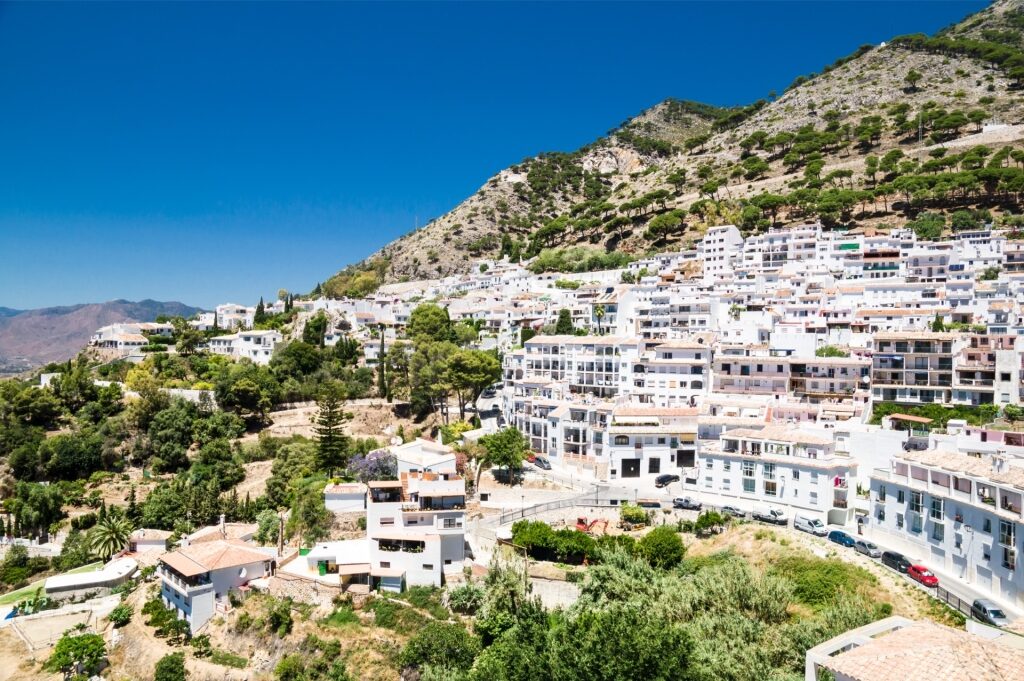
Mijas
The Pueblos Blancos, or White Towns of Andalusia, provide the most compelling reason to leave the coast behind.
Spilling over the Mediterranean scrub-carpeted interior hills are countless whitewashed, idyllic villages. Of these, 19 are official Pueblos Blancos—a status awarded due to their beauty and heritage—and eight are located in Malaga province.
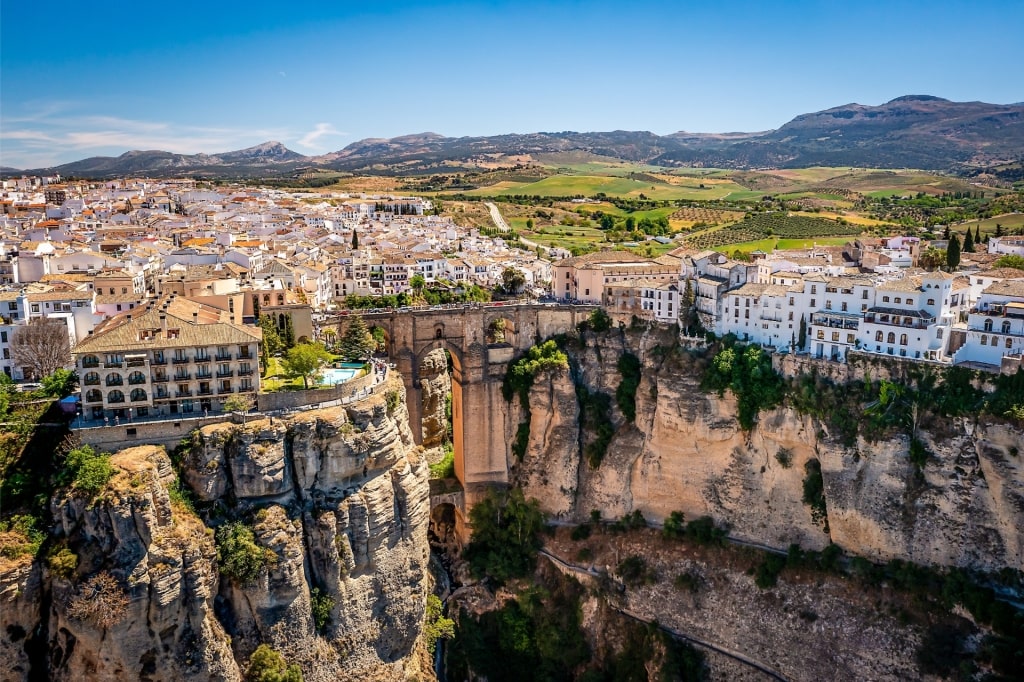
Ronda
The Pueblos Blancos that Malaga is most known for include Ronda, a large Spanish town known for its towering bridge spanning a deep gorge and nearby Setenil de las Bodega, famed for its streets shaded by overhanging rocks.
Mountain-clinging Mijas and Frigilliana, famed for its beautiful floral displays, are two further examples of Andalusian village life, each enriched with far-reaching panoramas.
Tapas
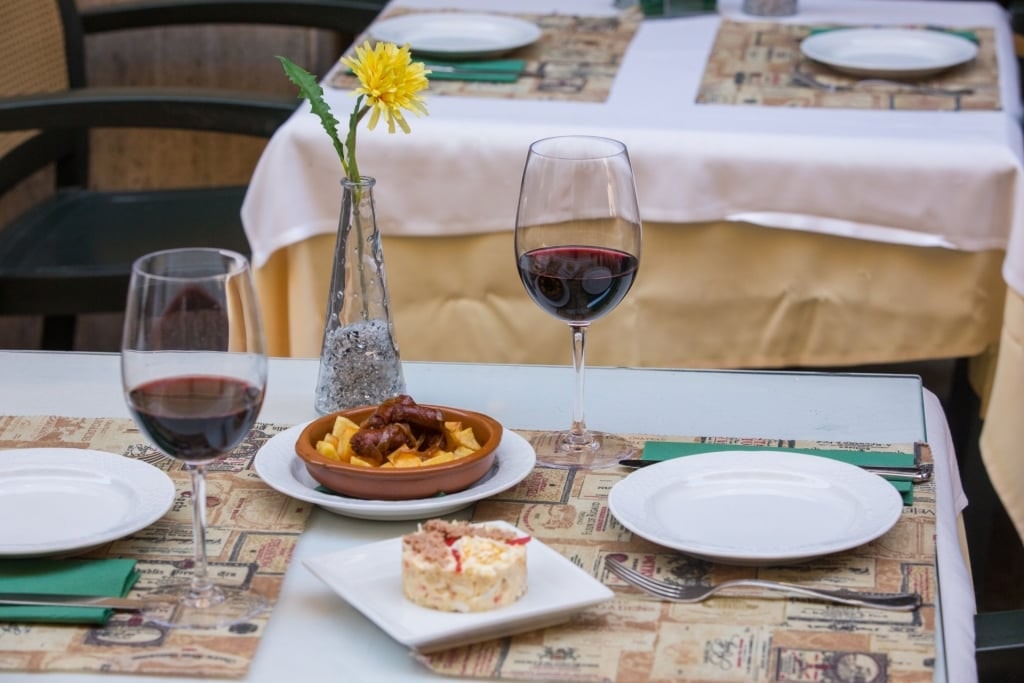
Tapas
Tapas have become a timeless tradition across Spain. Still, given that Andalucia is the birthplace of tapas as we know it today, Malaga is a magnificent place to taste all the local flavors.
This is especially true as some bars in Malaga still serve tapas as intended: as a complimentary, savory snack to accompany drinks. In fact, the Spanish verb tapar means to cover, and it’s often cited that these little bites were initially served on top of a beverage to stop flies from entering the glass.
Some of the bitesize morsels that Malaga is best known for are pipirrana, a seafood, tomato, and pepper salad, and boquerones fritos, or fried anchovies—the last being so prevalent the city’s residents are sometimes playfully referred to as Boquerones.
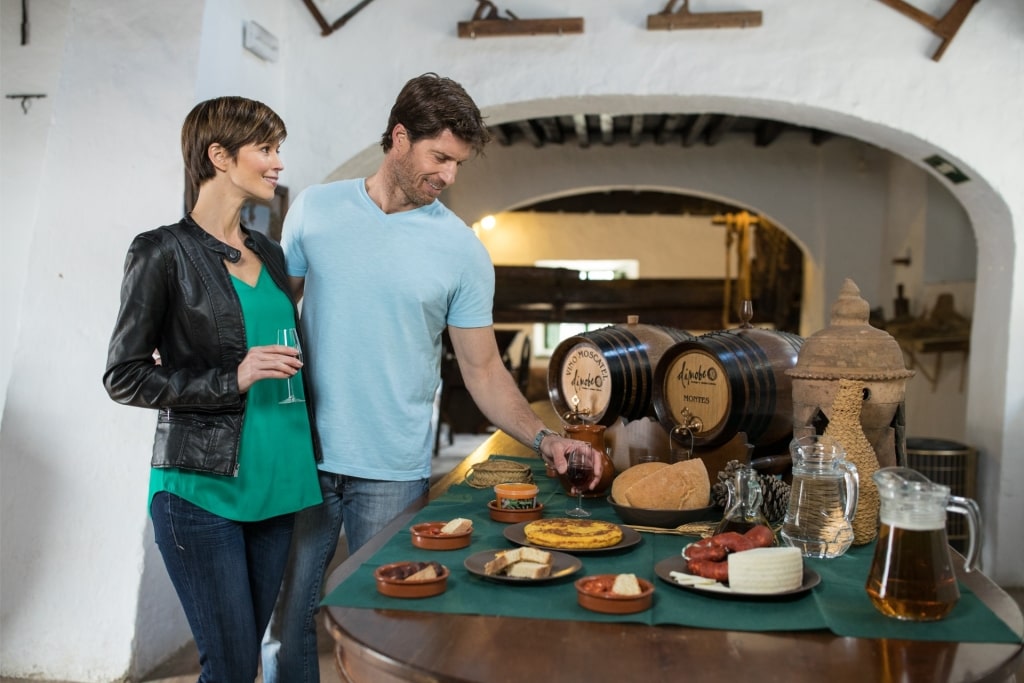
Tapas tasting
Spanish favorites are also abundant, including croquettes and patatas bravas, typically cubed potatoes topped with smoked paprika sauce. For a first-time introduction to Malaga’s tapas scene and a side serving of local life, head to Mercado Central de Atarazanas.
One of the city’s most famous buildings, this 19th-century market—which takes neo-Moorish inspiration from its previous life as a shipyard—is a superb, if slightly touristy, spot to enjoy a few traditional snacks before a tasty hunt for a the best tapas bars in the Centro Histórico.
Espeto de Sardinas
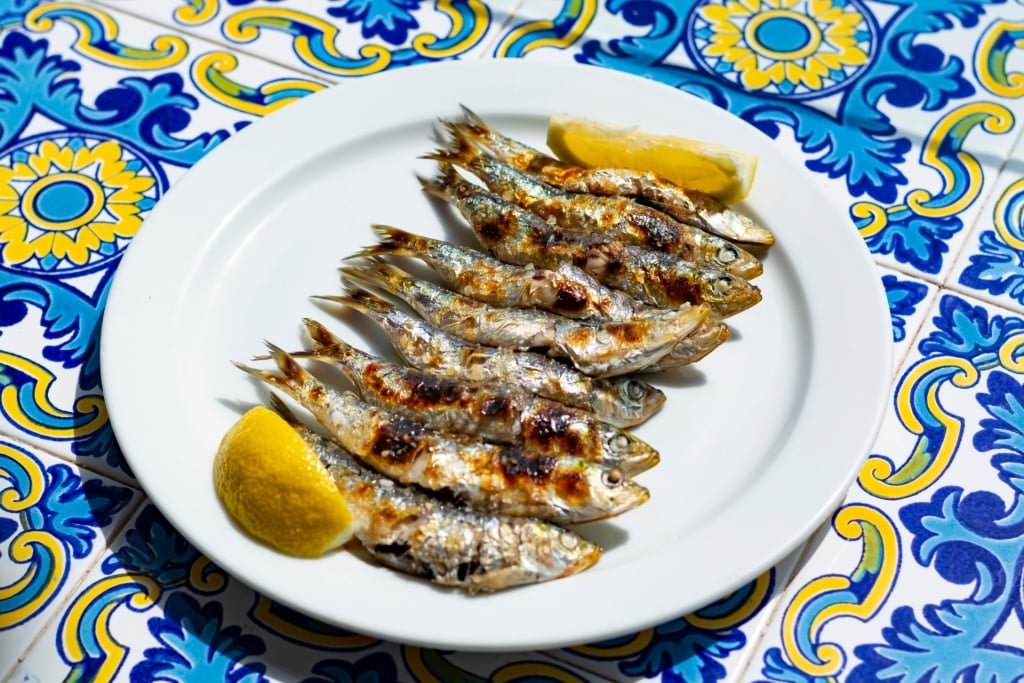
Espeto de Sardinas
If there’s one summer dish all Malagueños will tell you to sample while in the region, it’s an Espeto de Sardinas or sardine skewers.
A staple of the Spanish city and the Costa del Sol since the 19th century, this simple dish involves placing a handful or more of sardines on a stick before cooking them over charcoal.

Espeto de Sardinas
For the most typical experience, it’s necessary to head to the beach and find a chiringuito. At these shoreside shack restaurants, the sticks are embedded into the sand and tilted over the flames, their grilling expertly overseen by the espetero, or sardine chef.
For the best chiringuitos near the city, head to the sands fronting El Palo. In this fishing neighborhood, espetos are still cooked as intended, particularly between May and August when the sardines are at their plumpest.
Centro Histórico Shopping
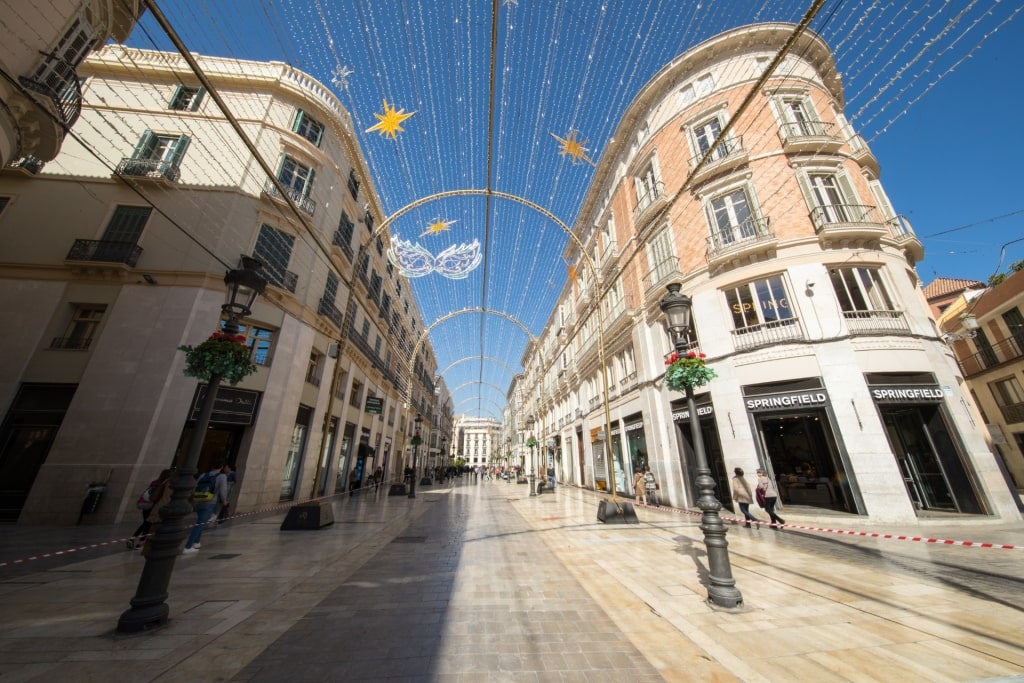
Calle Larios
Malaga’s mostly pedestrianized Centro Histórico is a pastel-hued delight. Malaga is celebrated as one of the world’s oldest continuously inhabited cities. An amble between its tapered streets, broad thoroughfares, and leafy plazas or squares will leave you smitten—especially after a spot of retail therapy.
One of the most famous shopping streets in the city, and indeed all of Spain, is Calle Larios, a wide, car-free street carpeted with marble.
Completed at the end of the 19th century—and named after Manuel Domingo Larios y Larios, credited with expanding Malaga’s well-respected textile industry—it’s been the beating retail heart of the city ever since. The ice cream parlor Casa Mira, founded more than a century ago, is considered the oldest shop on the street.
Cutting-Edge Museums & Galleries
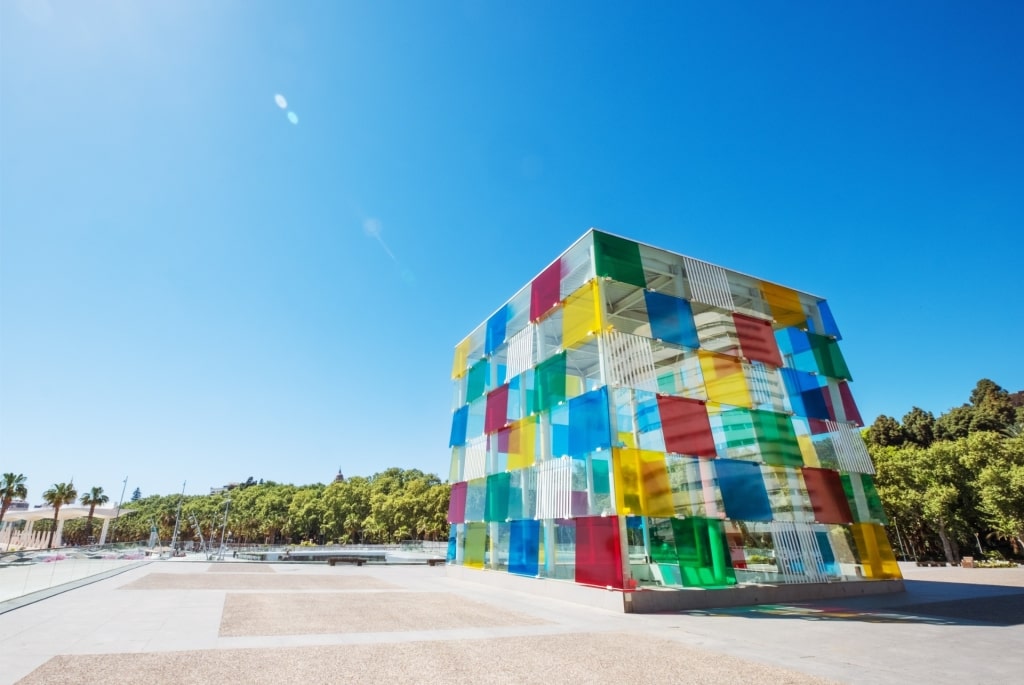
Centre Pompidou
The Centro Histórico might be one of Europe’s oldest, but Malaga is also known for its forward-thinking, creative side—best expressed in its galleries and museums.
Most slick is the port-side Centre Pompidou, a contemporary gallery that exhibits work by the likes of Frida Khalo and Picasso below its instantly recognizable, Cubist-inspired glass atrium.
While only a “provisional” outpost of France’s more famous Pompidou, the center’s extension until 2034 is particularly noteworthy, given that the original Pompidou will close for a five-year renovation project in late 2025.
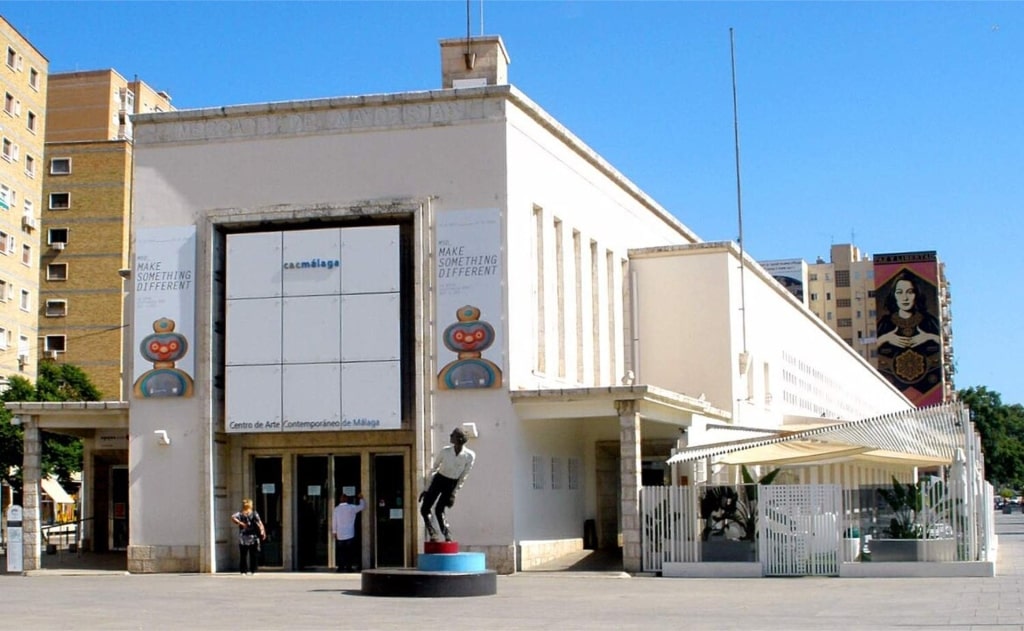
CAC Málaga Photo by Zarateman on Wikimedia Commons, licensed under CC0 1.0
Other stylish artistic spaces in the city include CAC, Malaga’s Contemporary Art Center, and Museo Jorge Rando, named after and dedicated to the work of this acclaimed Malaga-born neo-Expressionism artist.
Prefer fine art? Malaga’s clutch of world-class museums, including Museo Carmen Thyssen, Museo Revello de Toro—showcasing one of Malaga’s most talented portrait painters, Félix Revello de Toro—and the sensational Museu de Málaga keep a classic balance.
The Dolmens of Antequera
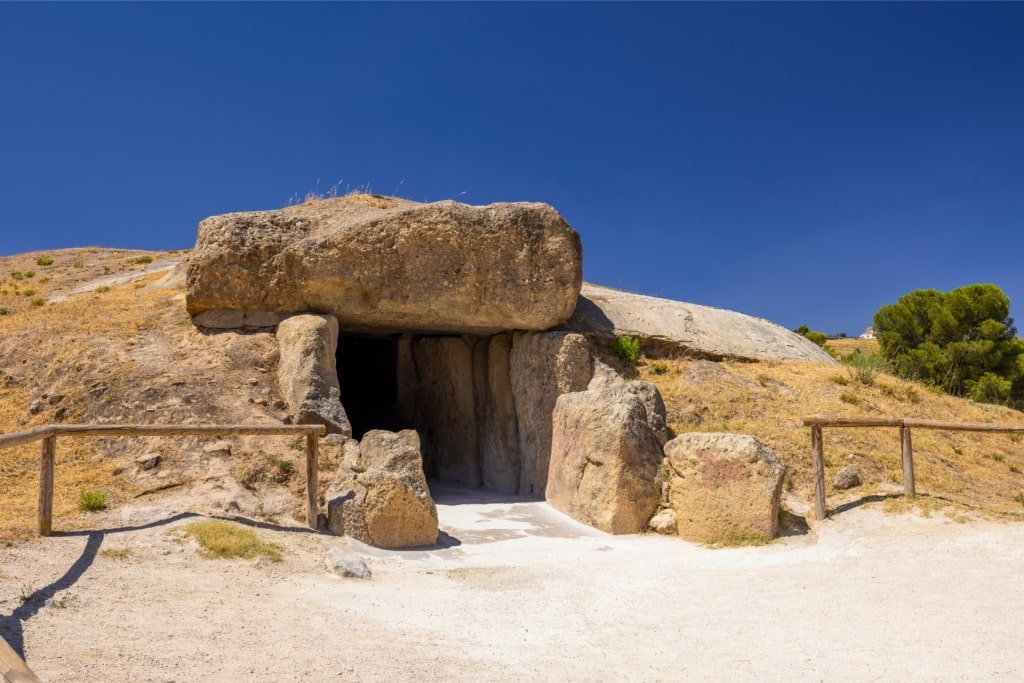
Dolmens of Antequera
Just a 45-minute drive inland from Malaga, the pretty town of Antequera is well worth a day trip for its historic center, Alcazaba, and a clutch of Spanish churches alone.
Add in the fact that Antequera’s trio of Neolithic and Bronze Age burial sites are the only UNESCO World Heritage Site in the province and you’ll be glad you took the time to visit.
Stepping inside the oval chambers of these burial sites, the oldest dating to around 3600 BC, is truly awe-inspiring and provides one of Malaga’s most memorable experiences.
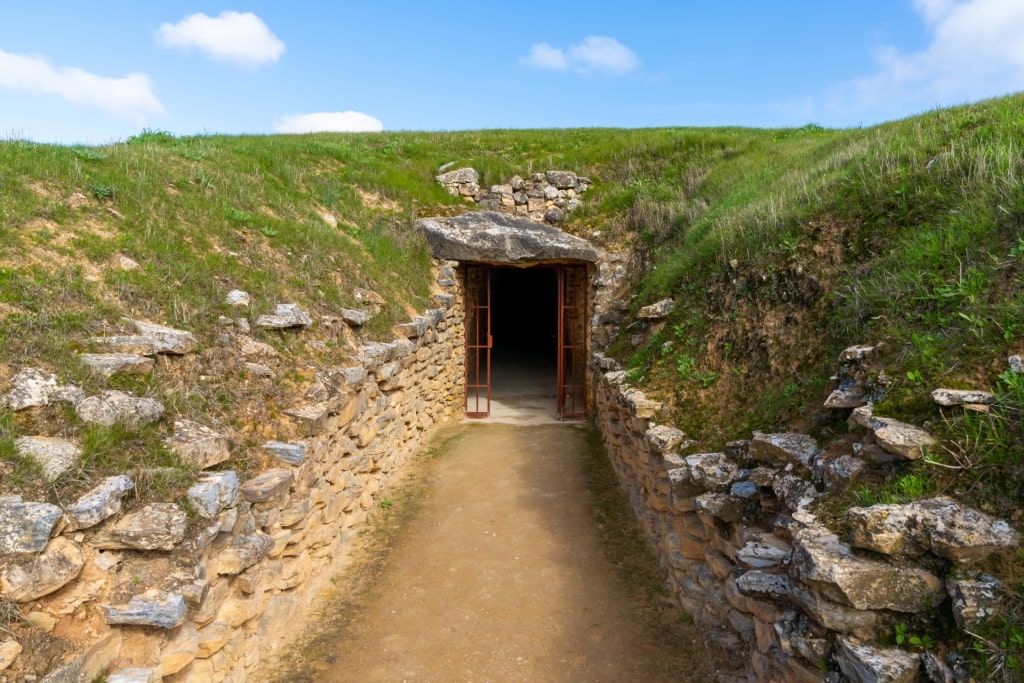
Tholos of El Romera
Spare a few hours, and you’ll have ample time to visit all three—the Menga Dolmen, Tholos of El Romeral, and Viera Dolmen—and the informative, interactive museum.
Faith & Festivities
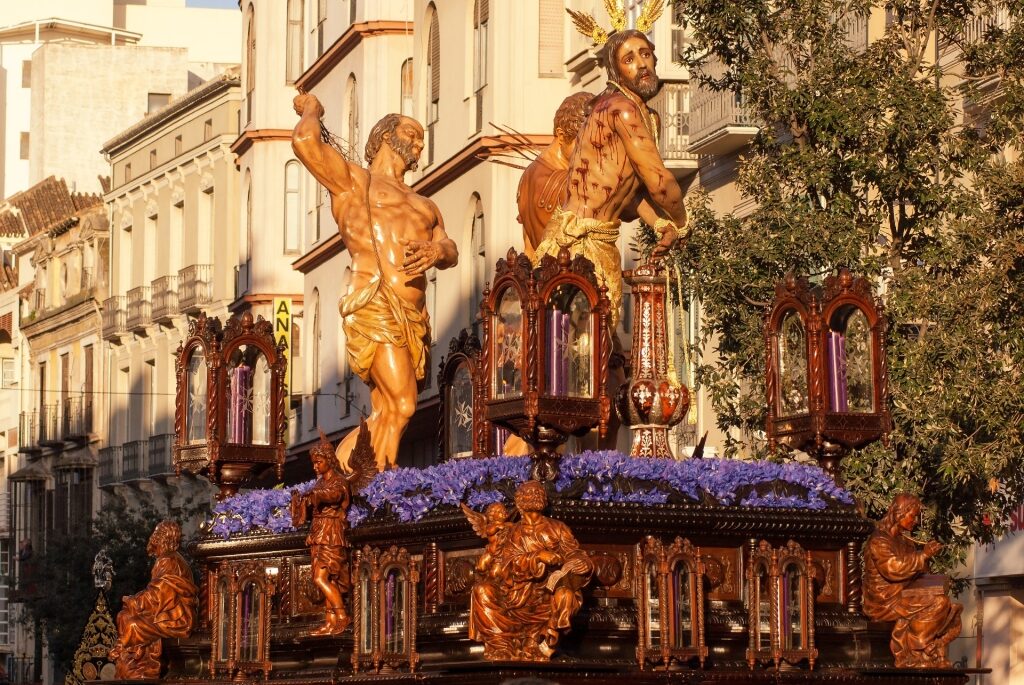
Semana Santa
Come Easter, Malaga feels like a week-long procession. During Semana Santa, Spain’s Holy Week, the city’s 42 cofradías, or brotherhoods, traverse the streets in penitential robes, carrying centuries-old float-like pasos topped with religious sculptures.
It’s an integral part of Easter across the country, but the processions in Malaga—alongside Seville and Valladolid—are particularly famous.
No matter what time of year you visit, Semana Santa’s traditions are spotlighted at the Museo de las Cofradías. Some of the most precious pasos and garments that Malaga is known for are displayed inside this converted charity hospital, which also houses the association of brotherhoods.

Malaga
Ready to discover the delicious flavors and beautiful scenery that southern Spain is famed for? Browse Celebrity’s cruises to Malaga to plan your perfect Mediterranean vacation.
